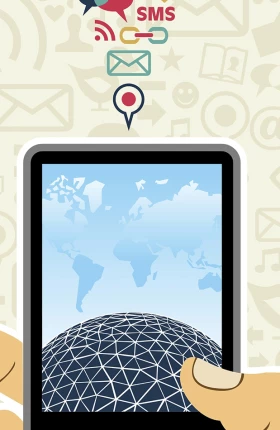This is the fourth in a series of articles highlighting lessons from China on the future of retail. The first article looks at how consumer behavior in China is evolving. The second article explores how the online consumer journey is changing. The third focuses on how companies can capitalize on customer insights to improve innovation.
Most retailers understand that commerce will continue to evolve, combining both brick-and-mortar and online elements. The goal is an integrated process that gives consumers a seamless experience and allows companies to capture the maximum operational benefits across both physical and digital operations. So far, no retailer has achieved full integration, but most are somewhere along the path. Many retailers with brick-and-mortar locations have built online businesses, and online retailers are increasingly opening physical outlets to strengthen their brands and engage with customers face-to-face.
To capture the full benefit, however, companies will need to fundamentally rethink their processes and redesign integrated retail in new ways, with new technologies. This is a major transformation. It involves not only a deep understanding of a company’s value proposition to customers, but also a long-term mindset, given the investment of time and capital needed to digitalize the wide variety of processes needed to run the operations.
Companies will need to redesign integrated retail in new ways, with new technologies.
Companies in China are developing fully integrated retail, offering a glimpse of the payoffs it can provide. In this article, the fourth and final in a series on what companies in the West can learn from China, we profile several case studies and highlight lessons learned from interviews with executives leading the way.
Experimentation in the West
Physical retail is here to stay: about 85% of retail sales still take place in brick-and-mortar stores. Yet much of the industry’s future growth will come from e-commerce, which allows companies to use customer data to learn far more about customers and meet their needs more quickly and effectively than can be done through traditional means. For this reason, most companies in the West have tried launching hybrid business models. For example, some retailers have rolled out click-and-collect offerings that connect back-end inventory with logistics solutions. Others offer loyalty programs that enable them to develop a single, comprehensive view of individual customers and to gather data on their shopping behaviors and preferences.
Recently, some online-only brands have started opening physical locations. For example, Bolia International, a Danish furniture company, initially operated online only before opening so-called concept stores in several European countries: customers can see furniture samples first-hand in a store and then place orders either in person or online. Similarly, Rent the Runway, a US company that lets customers rent designer dresses and fashion accessories, launched online in 2009 before opening stores in a handful of US cities.
Perhaps the best-known example of this trend is Amazon, which has begun experimenting with physical stores in the categories where it has the highest online penetration (books) and which recently acquired the Whole Foods Market chain. Some may think that the Whole Foods deal is about winning in the grocery segment alone, given the massive size of the market and the frequency of customer visits. At a more strategic level, however, the deal underscores the potential of a truly hybrid, offline-online retailer. For example, Amazon can potentially use Whole Foods stores to gain greater insights about customers and tailor online offerings for them in a more personalized way. The physical stores could also offer local distribution points for faster delivery or more convenient pickup points for nongrocery items.
China Leads the Way
Retailers in China are further along in the integration of offline and online shopping than companies in the West because of several factors:
- A Digitally Savvy and Demanding Consumer Base. Consumers in China tend to be younger, more digitally savvy, and more reliant on mobile commerce than their Western counterparts. Given the innovation among retailers in China in the past several years, consumers there are willing to adopt new technologies rapidly. At the same time, they expect an ultraconvenient, hyperengaging shopping experience that is entertaining, social, and highly personalized. (See “What China Reveals About the Future of Shopping,” BCG article, May 2017.)
- Dynamic Infrastructure. Retailers in China can identify and react to new trends and individual consumer demands more readily than companies in the West because of differences in their supply chains. Flexible manufacturing facilities allow companies in China to use smaller production runs with faster turnaround cycles. Flexible, technology-driven distribution models in China help companies as well. For example, Cainiao runs a digital platform that provides technical infrastructure to connect thousands of logistics suppliers, aggregating insights that small and large companies can capitalize on. (See “What China Reveals About the Future of Innovation,” BCG article, August 2017.)
- Concentrated Market Structure. Online commerce in China is highly concentrated, conducted through a few massive platforms run by technology companies, such as Alibaba. This concentration creates a network effect in which the platform companies work directly to support brands and retailers as they digitalize their processes to meet new consumer demands. This model benefits not only the brands but the platforms as well. What’s more, the platform companies have begun investing significant capital to disrupt some retail formats by taking ownership stakes in physical chains. (See the sidebar.)
ALIBABA’S ACQUISITIONS IN PHYSICAL RETAIL
For the past several years, Alibaba has struck deals in which it gained ownership stakes of brands and companies with a strong brick-and-mortar presence:
- Electronics. In August 2015, Alibaba paid $450 million for a 20% stake in Suning Commerce Group, an electronics chain. Through this deal, Alibaba and Suning started by integrating inventory files of products that were both offered on the Alibaba market and carried in Suning stores. This created significant capital efficiency and allowed for faster customer delivery. The second priority was to enable customers to use Alibaba’s online platform to book after-sales service in Suning stores. All customer interactions are linked to an online profile, allowing the brands and retailers to generate richer customer insights.
- Department Stores and Malls. Alibaba bought a 28% stake in Intime Retail, a China-based chain, in 2014 and then took the company private in May 2017 and increased its stake to 74%. The goal is to create a fully digital and integrated experience in which every single interaction—from entering the parking lot to paying for goods when exiting the store—will be seamlessly linked into a digital profile. According to the Intime executive team, the first priority was to link its customer data with Alibaba’s rich customer profiles, giving the department store a more detailed understanding of its customers. The focus now is to link internal processes, such as purchasing and merchandising, so that the store more accurately captures—and responds to—changes in consumer demand. Recently, Intime has also began to launch pop-up shops in existing department stores to promote popular online-only brands. At a time when more than half of the department stores in China are experiencing decline, Intime has been posting same-store sales growth.
- Grocers. In November 2016, Alibaba paid $300 million to buy approximately 35% of Sanjiang Shopping Club, a discount grocery chain. In May 2017, Alibaba paid $100 million for an 18% stake in Lianhua Supermarket Holdings. Also in 2017, Alibaba funded the launch of Hema Fresh, a small-format grocery accessed both through an app and in physical stores. Through these investments, Alibaba is expanding its footprint in a category where shoppers visit stores frequently, helping the company expand its understanding of customers and their offline behavior.
A Spectrum of Roles for Stores
Interviews with executives for both online and offline retailers in China confirmed our thinking. There is a clear role for physical stores in the retail universe. However, the role they play within an integrated retail experience changes depending on the category.
The role that physical stores play within an integrated retail experience changes depending on the category.
Functional. On one end of the spectrum, physical stores serve a functional role, such as providing after-sales service or serving as a staging point for last-mile delivery. This applies in categories where the products are standardized (such as electronics, books, and nonperishable grocery products) or where speedy delivery is imperative (such as the ultraconvenient delivery of prepared food).
For example, Xiaomi, an electronics manufacturer in China, recently began opening physical stores and is rethinking how to use the space they provide. Because Xiaomi understands that consumers can buy products through many channels, it is reorienting the in-store experience to consult with customers in order to better understand their needs. By integrating those insights across channels, Xiaomi is accelerating its product innovation with a steady stream of new products that meet changing customer demands. Xiaomi is also using stores to provide delivery distribution points and after-sales support.
Experiential. At the other end of the spectrum are stores that serve a more experiential or inspirational role—for example, in-home furnishings or lifestyle and fashion department stores. Because these stores sell nonstandard categories of products, the browsing and consultation elements are crucial to customers. Shoppers are less focused on efficiency and more on an in-store experience that is personalized and engaging. Intime Retail, for example, has integrated virtual-reality lifestyle and home decor services into its physical stores, creating a process that a customer begins online but completes in stores with the assistance of design experts.
Hybrid. Grocery stores fall somewhere in the middle of the spectrum. Some grocery products, such as packaged goods, are standardized, while others, such as fresh and prepared foods, are more experiential and involve time-sensitive delivery. Hema Fresh, a grocery format that Alibaba developed with integrated retailing in mind, illustrates the way comprehensive customer insight is influencing retail:
- In-Store Experience. The average Hema store is much smaller than a traditional grocer and is located in an urban neighborhood. The majority of standard items are stocked in a warehouse adjacent to the store, freeing floor space in stores for fresh products. Each location includes live lobster tanks and onsite dining in a restaurant-like setting.
- Delivery. Each Hema store is an offline grocer and a fulfillment center, driven by a powerful analytics system. Each store serves its local community, making it possible to deliver online orders within a three-kilometer radius in 30 minutes. Advanced data analytics drives the assortment of products in stores, to ensure that the company is meeting customer demands.
- Digitalized Customer Interactions. Most customers are store members and interact with Hema—from preordering to payment—through a mobile app, even while they are shopping in a store. This allows Hema to develop richer insights into its customers and to better personalize both offers and the assortment of goods for each location and each individual.
The concept is already proving its merit: efficiency on the sales floor is three to five times higher than for a traditional supermarket in China, and customer loyalty is extremely high. Users place an average of 4.5 orders each month. More than 50% of all orders are placed online; for more mature stores, the share of online orders can reach as high as 70%. As of October 2017, Hema had opened 20 stores across the country.
Lessons for the West
Although retailers in China are launching a wide variety of models and experiments, their experiences have generated many common themes that can serve as lessons for Western companies. In all cases, for example, retailers gain richer customer insights by digitally capturing customer interactions. And executives consistently speak about the imperative to begin digitalizing the full breadth of offline experiences.
Retailers gain richer customer insights by digitally capturing customer interactions.
In addition, Western retailers should take the following actions:
- Plan for the long haul. There is no quick fix, and superficial technology gimmicks are not enough. Developing a truly integrated business model that combines the best aspects of online and offline commerce is a fundamental change in business strategy that requires a multiyear vision and significant capital.
- Lead from the top. Setting up the initiative as an isolated digital project led by the CIO is a guarantee of failure. Rather, success requires the direct involvement and oversight of the CEO, along with all functional leaders—CMO, CFO, and the heads of business units—serving as champions for change in their respective areas.
- Expect the real work to happen below the surface. Many companies get drawn in by consumer-facing technologies, the most attractive and visible aspects of digitalization. But they’re just the tip of the iceberg. A real transformation requires digitalizing every process—not only customer-facing aspects but also all the internal processes by which most of the work gets done at companies, including such mundane tasks as tracing invoices back to suppliers. (Of course, in addition to processes, companies need the right systems architecture and data.) Every process that is not digitalized and linked to other functions in the company represents a missed opportunity to gather insights, better serve the customer, and operate more efficiently.
- Partner with external firms to build more comprehensive data sets. Even the most advanced companies simply won’t be able to generate enough insights about real-time consumer behavior and digital consumption habits on their own. Instead, they will need to find partners—likely social media companies, at least for the next several years, or syndicated research firms, such as AC Nielsen and Dunnhumby—that can offer richer information not only about current customers but about potential customers.
- Invest heavily in digital and analytics talent. Given the importance of analytics, companies can’t simply hire one or two people and ask them to start tinkering. Rather, they need to invest in building digital and analytics. Almost half of Hema’s employees, for example, are engineers.
In an increasingly digital world, companies need to find the right business model—one that lets them capture the full advantages of both online commerce and physical retail. Companies in China are further along in this journey than their Western counterparts, and already they are experiencing the wide variety of ways in which digitalization helps them serve customers both offline and online. This is welcome news for the companies that are still working on developing integrated retail, because making these changes is not optional. As the retail industry evolves, retailers will need to evolve as well.






